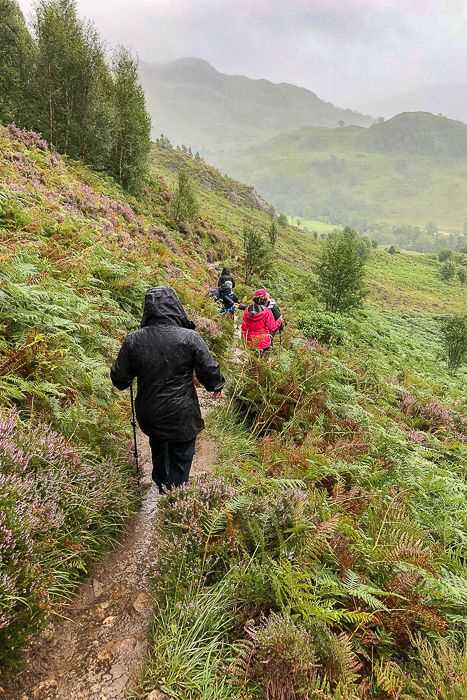We awoke in cool, showery conditions at the old pier in Oban, its former warehouses now award-winning restaurants in a town that promotes itself as “the seafood capital of Scotland.” It was the perfect morning for a distillery tour and the Oban Distillery, in situ since 1794, was but a stone’s throw from the ship. It provided a very informative tour along with a first-class exhibit and, of course, a tasting room.
The town itself had much to offer. It is a service center for the people of Argyll and the Hebridean Islands, with its large Caledonian Macbrayne ferry terminal always busy and local fishing boats coming and going throughout the day. Oban is a sheltered harbor with a dramatic setting affording wonderful views. We were to depart at 11 a.m., tidal conditions setting the pace as we set sail for the Atlantic sea lock of the Caledonian Canal at Corpach.
Over lunch and into the early afternoon, we sailed lochs Linnhe and Aber to arrive at Corpach, Gaelic for “place of corpses.” This is where the funeral cortèges of foreign royalty rested up before their onward transit to the burial ground on Iona. Corpach sits below Ben Nevis, Britain’s highest peak at 4,400 feet, rarely fully visible through the clouds. In the distance, is Fort William—another town named for the Protestant cause, a town known to all British schoolchildren as the place with the highest annual rainfall in the country. Two large pipelines running down the hillside feed an aluminium smelter and, closer to our vessel, was a large timber processing plant, both providing much needed local employment to supplement the tourist trade. Fort William is a major outdoors center, with walkers and climbers visiting the area all year round. There was a big crowd on the foredeck to watch Captain Tony Reading bring the vessel through the lock into the Corpach Basin with just inches to spare. Scottish and Canadian flags fly here, the latter a reminder of the Caledonian Canal’s links with the Rideau Canal in Ottawa.
Our afternoon visit was to Glenfinnan, the romantic location where Bonnie Prince Charlie raised the standard for the Jacobite cause for the first time on British mainland in 1745, a rising that ended disastrously the following year at Culloden. For a few brief months there had been a very real possibility of the Stuart dynasty being restored to their rightful throne and the balance of power between Protestant and Catholic powers in Europe shifting decisively. Today, Glenfinnan is visited by large numbers of Harry Potter fans, since it was over the Glenfinnan viaduct that the Hogwarts Express famously steamed. Some of us had close views of the viaduct from a mountain trail on the afternoon hike; others took a stroll along a natural history boardwalk through the wetlands at the edge of Loch Shiel, spotting alder, birch, and willow trees that grow happily with their feet in the water and a fine stand of the native Caledonian pines on the rocky hillside. A smaller group of adventurous souls enjoyed an afternoon’s kayaking in Loch Eil. Upon our return to the ship, we discovered mulled wine had been prepared by the staff.









